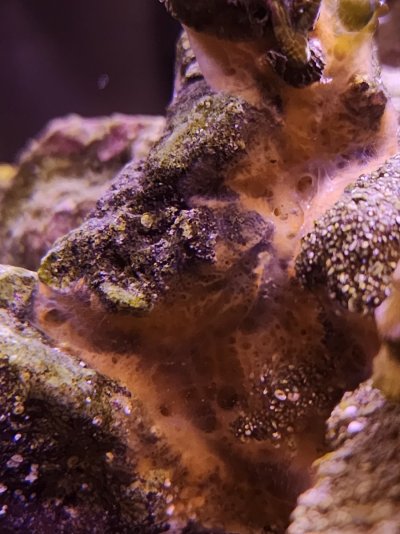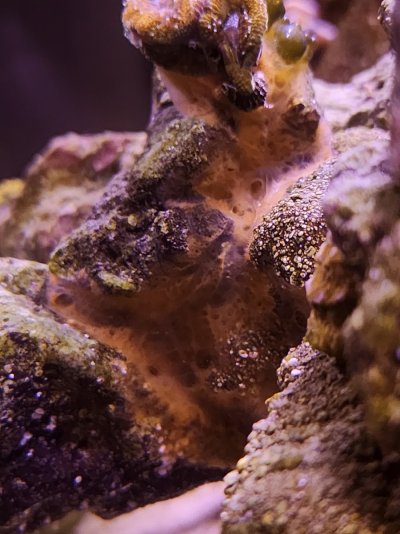So there's been this odd Relish orange growth on one of my rocks in my nanao. It began around the base of a micromussa that honestly, hasn't grown a bit in 5 months.
I'll include pictures. Texture-wise it feels kind of slick. It has a webby translucent outer layer with funnel like holes in it that seem to reacted to flow or being prodded. Anyways, is this a bad thing? Is it going to completely dominate this rock and smother corals? If so, how would I go about getting ride of it?


I'll include pictures. Texture-wise it feels kind of slick. It has a webby translucent outer layer with funnel like holes in it that seem to reacted to flow or being prodded. Anyways, is this a bad thing? Is it going to completely dominate this rock and smother corals? If so, how would I go about getting ride of it?




















